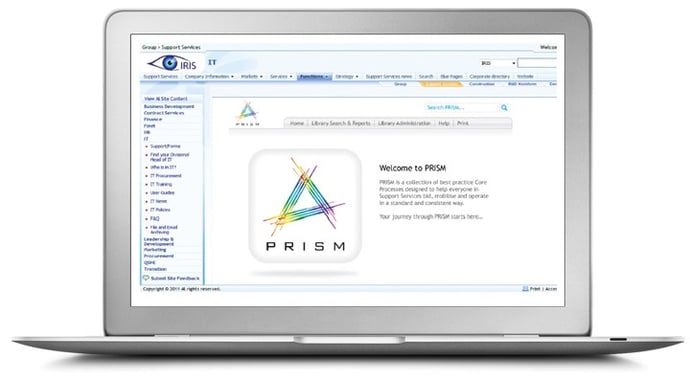Calculating Return on Investment (ROI) on Business Process Management (BPM)
Emma Harris
A recent Gartner research note states that 80% of organisations conducting business process management (BPM) projects will experience an internal rate of return better than 15%.
Of the 20 companies who responded to their survey, 55% had returns in the $100,000 to $500,000 range per BPM project.
You may be thinking that 20 companies is not a very large number of respondents. To be fair those 20 companies had completed 154 BPM projects between them, which is of course a far larger sample. However we suspect that one of the reasons that the number of respondents was quite small is due to the difficulty of calculating the return on investment (ROI) on Business Process Management (BPM) projects.

Why is Calculating ROI on BPM Projects Difficult?
Return on the investment in a BPM project can arise in two ways: Directly and Indirectly.
Direct ROI is reasonably straightforward to calculate, but still requires a judgement to be made on what can be directly attributed to a BPM project.
Indirect ROI is much harder to quantify.
This means that often the ROI on BPM projects just isn’t quantified. This is a real shame because, as Gartner reported, the returns are generally excellent.
Calculating Direct ROI from BPM
To calculate the direct ROI on any given BPM project, the cost of the BPM project is compared with any cost savings made or increases in profit.
Determining the Cost of a BPM Project
Firstly the cost of the project needs to be calculated. This is pretty straightforward.
It of course includes the external costs for the BPM software system – both initial and on-going – and the cost of external consultancy and training services purchased to support the project.
It also includes the cost of any internal resource used on the project. This will mostly be the time people need to spend on the project, not only those in the BPM or process improvement teams, but the subject matter experts’ time and the time of anyone else connected with the project (such as the leadership team, marketing).
Calculating the cost of time requires a judgement to be made on how any given employee’s time is costed. Most organisations have already agreed hourly charging rates for differing bands of employees, taking into account gross salary and an overhead charge.
If yours hasn’t, don’t make this too complicated. Just calculate three cost bands for junior, senior and middle salaried employees, based on average gross (including employers NI) salary and a sensible overhead charge for each band.
Determining Cost Savings Made or Increases in Profit
Generally calculating direct cost saving and increases in profit is reasonably straightforward to calculate. A difficulty that sometimes arises however, is how to agree how much of an increase in profits say, is attributable to a BPM project, rather than to other factors.
Increases in profit
If for example you have used your BPM system to support your bid processes, you will be able to attribute an increases profit to BPM. How much is a matter of judgement.
Taking a BPM approach, using the Triaster platform, Interserve have developed a mobilisation tool specifically to ensure that new business can be won and delivered to a reliable margin, whilst delivering a better service to Interserve’s customers.
For more on this please read the case study: Interserve - Winning more business, reducing costs and delivering more value
For Interserve calculating the increased profits attributable to BPM is a matter of calculating the positive impact of their mobilisation tool on cost containment and the time taken to mobilise. Possible - but this certainly needs discussion, judgement and general agreement with the bid and mobilisation teams.

Other Triaster customers have set up specific 'bid BPM systems' to support large tenders. These demonstrate most effectively that they have the processes in place to support their bids and ensures that their BPM systems are ready to go as soon as they win the projects. This is particularly key for joint ventures.
Which is exactly what Balfour Beatty found some years ago when they were awarded a £ 414 million contract by Bord Gais Networks in the Republic of Ireland, in a joint venture with CLG Developments Ltd. Calculating the ROI here was a matter of deciding how much of the profit from this project was attributable to their bid BPM system.
Cost savings
When it comes to direct cost reductions, these are most obviously seen by Triaster customers in a reduction in audit costs. Since 2012, Skanska UK has saved £40K in annual audit fees, for their ISO assessment. This is an easy ROI to calculate.
Then we come onto how a BPM system drives efficiency. Every time a process is improved to cut out a wasteful step, costs are saved. Every time duplication is removed from a process, costs are saved.
These can be quite difficult to calculate, unless your BPM system enables you to capture and report on time, effort, resources etc and reports on these.
This is key in fact, not just for calculating ROI but also to enable you to model the savings made if various potential changes are made and thereby determine the optimal root forward - before making the changes.

To view an example Triaster system report please click here.
Often a small saving, repeated many time results in a cost saving much bigger than expected. Have a look at an example of this by clicking here: How can Triaster save your organisation money?
One cost saving that it is very difficult to calculate, but which is likely to add up to many hundreds of thousands of pounds for large organisations, is the cost saving every time an employee is able to quickly and efficiently find documentation or how to do something just by going to the BPM system.
It is worth at least trying to make an assessment on this based say on every employee saving 15 mins time a day. See how much that adds up to in cost savings over a year; over five years.
Calculating Indirect ROI from BPM
Indirect ROI from BPM is much harder to calculate, but the benefit should not be ignored.
ROI from Reducing Risk
Reducing risk so that a quality failure is avoided and the reputation of the brand is protected could be said to be priceless.
Unfortunately the cost of a quality failure is usually not measured unless a quality failure has already taken place. Then the figures are eye watering.
A BBC news report in December 2015 entitled, 'Volkswagen: The scandal explained' stated that:
'With VW recalling millions of cars worldwide from early next year, it has set aside €6.7bn (£4.8bn) to cover costs. That resulted in the company posting its first quarterly loss for 15 years of €2.5bn in late October. But that's unlikely to be the end of the financial impact. The EPA has the power to fine a company up to $37,500 for each vehicle that breaches standards – a maximum fine of about $18bn.'
For more on this please read the article: Managing Risk in Business: How can I manage risk and avoid quality failure?
The ROI on any BPM project which avoided this would have been huge, but very unlikely ever to have been calculated or attributed. Which is a shame, as I am sure that if it had been, the project would have immediately got budget.
ROI from Regulatory Compliance
Achieving regulatory compliance with ISO, Sarbanes Oxley , the FCA, HEFCE or whoever regulates your industry sector, obviously delivers a great deal of value - particularly if it is a statutory requirement. Even if it isn’t it will be a quality mark that your customers and potential customers will look out for.
Again this is one where the ROI is hardly ever calculated. But, particularly if you are trying to get budget for a BPM project to support this, make a rough calculation of what the results would be if key compliances aren’t achieved next year. Make some assumptions, state these clearly and base your calculations on these. For example, reductions in profit attributable to x customers lost and x new customers not won. The ROI is likely to surprise you.
ROI from Quality
Just as with addressing risk and achieving regulatory compliance, quality improvements are usually classified by organisations as a cost.
However ROI can be calculated if you set out issues that might arise if quality is not improved or deteriorates. For example inconstant working in a customer services team will deliver an inconsistent quality of service, which can damage trust and ultimately lose customers. Set out some working assumptions about the realistic damage that could be done/has been averted and attribute some figures against these.
You will be amazed at the results, especially when calculated for the expected lifetime of any customer.
We hope that this has been useful
Triaster deliver a BPM system that captures and reports on a great deal of data that will help with calculating the ROI on many BPM projects. But sometimes it does help to think a bit wider.
Related Articles:
How can Triaster save your organisation money? [Infographic]
How to Cost a Process to Identify Savings in an Organization
How can a BPM system enable me to achieve Continuous Improvement? Methods and Examples
Managing Risk in Business: How can I manage risk and avoid quality failure?
Achieving ISO 9001:2015 with Business Process Management (BPM)
How to Achieve a Quality Strategy for your Business
How much does Business Process Management (BPM) software cost?
Written by Emma Harris
Emma was Operations Director for Triaster for nearly 20 years, during which time as well as learning and perfecting her BPM and process improvement skills, she honed her inbound marketing expertise. She now runs D2e - Designed to engage - which designs and develops bespoke, engaging, HubSpot CMS websites, that help your entire company to grow and scale. She is delighted to still be delivering Triaster's marketing, whilst also helping other companies turn their websites into their hardest working asset.
